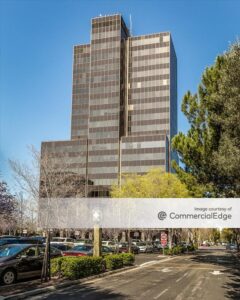ULI Special Report: Bring on the Upcycle

There are a number of signals in the market that commercial real estate is embarking on a new cycle. At ULI’s fall meeting in Las Vegas, debt and equity capital sources expressed their readiness to help fuel it.
Debt funds back up banks
During a panel on alternative debt sources, non-bank lenders said they are waiting for transactions to restart because they will definitely see a large portion of new acquisition financings.
“Our PGIM house view is that values have reached their trough, and so we see a really good opportunity for investors to come in and buy deals,” said Jaime Zadra, managing director of originations for PGIM.
PGIM’s lending activity includes a debt fund formed eight years ago that has grown to $6 billion GAV. “Traditionally, the life insurance space is low leverage,” said Zadra. “Today it has morphed into moderate lending as well, predominantly fixed-rate lending on what I would describe as core so class A, Class B assets in primary locations.”
The non-bank lending group—which also includes debt funds, REITs, the GSEs and CMBS—has been carrying a growing portion of the commercial real estate debt load since money-center banks started pulling back post-GFC. When interest rates began to rise in 2022 and regional banks ran into trouble, alternative lenders found a flood of opportunity.
READ ALSO: ULI/PwC Release 10 Emerging Trends for 2025
“Borrowers that never wanted to talk to us because they were busy with the banks were now talking to us and other debt funds,” said Steve Fried, principal & head of originations for Mesa West, Capital, which has had a debt fund for 20 years. “It was another great opportunity for us to step in and really increase the type of borrower, the profile of the borrower, the quality of the real estate, the amount of cash flow.”
Lately, Mesa West is also partnering with banks on high-quality construction deals so borrowers can get the loan-to-value they need.
But most of the activity that has resulted from the banks’ absence has been refinancings. Acquisition activity picked up in the second quarter, but the rise in 10-year treasury has pushed back the clarity investors and lenders are waiting for.
But non-bank lenders cannot fill all the gaps. There is a greater need for construction financing and large loans, since debt funds don’t typically do mega loans or co-invest on loans. Fortunately for borrowers, the CMBS market has been an active provider of higher-proceed loans this year. “That’s where the banks and investment banks really come into play,” Zadra said, “which is why, for the market to really function as a whole, (it ) needs these groups to come back.”
Worry is over for equity
During a general session in which the ULI/PWC Emerging Trend report was unveiled, panelists amplified the gist of the report: a new upcycle is beginning, though there are still some bumps in the road, including a shortage of affordable housing and work-from-home’s continued drag on office and many CBDs.
There is a lot more capital being “interested and curious,” as values have fallen and return profiles have become more attractive, according to Sara Queen, head of equity strategies for MetLife Investment Management.
“We are again much more positive, but there is a little bit of caution about what’s ahead in the next few months,” Queen said.
Mike Byrne, AEW’s CIO & head of private equity and debt for North America, echoed that sentiment, noting the firm is feeling good about its portfolio and is beginning to look for new opportunities for growth and new investments. “What a difference a year makes,” he said.
On the fundraising side, he said, it is “like a whole new world” with a renewed interest in core investments—not just opportunistic and niche assets.
Months before the Fed cut interest rates in September, for-sale inventory was returning with a 20 to 30 percent price reduction from peak and bidders were coming off the sideline, noted Hessam Nadji, president & CEO of Marcus & Millichap. “The Fed kind of put an exclamation point on the turning of the cycle.”
Recent movement in the 10-year Treasury rate in recent weeks, however, has moved sentiment back down, Nadji said. “It is not like the hockey stick that we had coming out of pandemic,” he said.
Jodie McLean, CEO of Edens, noted that retail has “been in the penalty box” for some time and did not have the value contraction that other property types had. “We are very optimistic about retail,” Edens said. “You have to be optimistic to be in retail. We’ve had almost no new growth since the Great Financial Crisis.”
In terms of the report’s markets to watch, the panelists were more measured in their enthusiasm. Queen cautioned that every city is a neighborhood-by-neighborhood story. “You can’t just look at Dallas and (say) everything works in Dallas—that’s not the case,” she said. “You still have to do your research. You still have to understand your submarkets and what the dynamics are there.” (See our story on the report for a full list of cities).
Once again, the overwhelming majority of the markets were in the Sun Belt. Byrne remarked on the lack of diversity on the list.
The post ULI Special Report: Bring on the Upcycle appeared first on Commercial Property Executive.



